Knowledge Forum “How Can Japan Contribute to Quality Infrastructure Investment in Developing Countries? Learning from Cases of ODA in Urban Transportation”
2023.11.20
On Sept. 21, 2023, the JICA Ogata Sadako Research Institute for Peace and Development (JICA Ogata Research Institute) held a Knowledge Forum to discuss efforts and challenges in urban transportation infrastructure development in developing countries as cases of quality infrastructure investment.
As a longstanding contributor to infrastructure development in developing countries, Japan has advocated for the importance of quality infrastructure investment. At this Knowledge Forum, experts introduced cases of JICA’s urban transportation infrastructure projects and discussed various aspects of Japan’s unique contributions as well as the future prospects in this field.
At the outset, JICA Ogata Research Institute Director General Miyahara Chie provided the opening remarks. She highlighted the significance of urban transportation infrastructure development in terms of expanding transportation opportunities for people, stimulating economic activities, and helping people live better. She then expressed her hopes that the participants would be able to gain a deeper understanding of quality infrastructure investment and discuss what is needed to equip developing countries with resilient and sustainable infrastructure.
Prior to the presentations by the speakers, JICA Ogata Research Institute Executive Senior Research Fellow Harada Tetsuya introduced the G20 Principles for Quality Infrastructure Investment adopted at the 2019 G20 Osaka Summit. He pointed out that these are comprised of six principles, including maximizing sustainable growth, integrating considerations for the environment, and strengthening infrastructure governance, and that quality infrastructure investment has become an international agenda item.
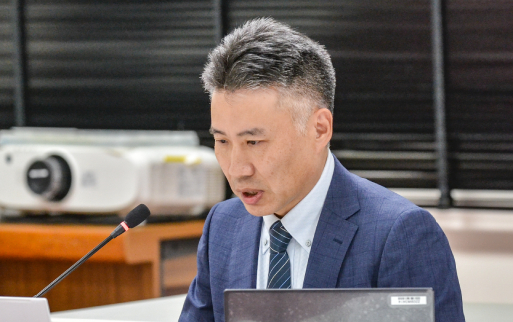
JICA Ogata Research Institute Executive Senior Research Fellow Harada Tetsuya speaking about quality infrastructure investment
The first presenter was JICA South Asia Department Director General Ito Teruyuki, who spoke primarily about JICA’s efforts in India and Bangladesh. JICA has contributed to the development of approximately 400 kilometers of subway rail lines in India. JICA has been a contributor to the Delhi Metro for over 20 years after helping with the Kolkata Metro which was the first metro that JICA worked on in India. He said that “the Delhi Metro has expanded to the point where it now has roughly the same number of passengers and kilometers as the Tokyo Metro. This has contributed greatly to improvements in issues such as alleviating traffic congestion and reducing air pollution. Furthermore, it has also been selected by the United Nations as the world’s first Clean Development Mechanism (CDM) project in the railway business.” Ito pointed out that the Delhi Metro has also changed people’s behavior, and that there has been progress in raising awareness about gender equality, including women’s empowerment, and in implementing safety measures at construction sites. He also touched on the contributions made by the metro’s operator Delhi Metro Rail Corporation as a consultant to metro businesses in 29 cities in India and overseas.

JICA South Asia Department Director General Ito Teruyuki speaking about JICA’s efforts in India and Bangladesh
Next, Deputy Director Kubo Ayako of the JICA Infrastructure Management Department gave a presentation on Transit-Oriented Development (TOD) efforts in Dhaka, Bangladesh, which has a population of around 23 million. TOD refers to urban planning that includes the development of rail lines and of districts and facilities centered around the stations. All of these developments are conducted in an integrated manner with the development of public transportation at the core. Speaking about the development, operation, and maintenance of the railway network in Dhaka and providing comprehensive support for the city to maximize the impact of the railway, Kubo said “Japan has been promoting integrated development of railways and cities through government and private sector cooperation while at the same time utilizing land readjustment. This experience is a major strength.” This aims to establish systematic structures of collaboration between the parties involved in TOD—central government, local governments, public transportation operators, and private investors—from the stage of formulating the vision to consider the role that an area should serve. She then introduced that this project will also develop TOD guidelines for government officials, which will be used in urban planning for the Dhaka metropolitan area.
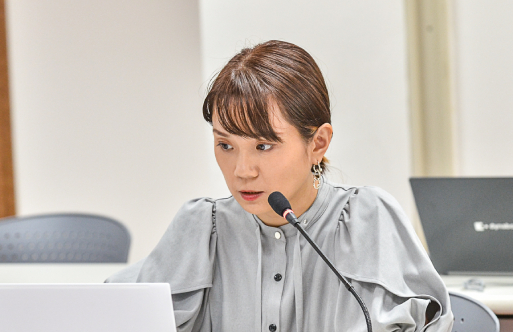
Deputy Director Kubo Ayako of the JICA Infrastructure Management Department giving a presentation on transit-oriented development in Dhaka
Finally, JICA Bangladesh Office Senior Representative Yamada Eiji, who is also a senior research fellow at the JICA Ogata Research Institute, gave a presentation on the impact assessment of development for the Dhaka Mass Rapid Transit (MRT) system in Bangladesh. Stressing the importance of impact evaluation for improving both accountability toward investments and future investments in infrastructure, he said “Lifestyles in Dhaka are quite varied. While business districts have been developed, slums are also scattered throughout the city. Detailed baseline surveys are essential to quantitatively indicate what kind of impact urban transportation development in Dhaka will have on the locals.” He explained that research findings on the results of urban transportation infrastructure development are gradually beginning to emerge. Having measured the effects of the Delhi Metro, Yamada found that employment for women had increased in areas close to the metro. He then touched on a plan to measure the effects of the Dhaka MRT by conducting a baseline survey with a sampling of 4,000 households from all parts of the city of Dhaka in 2023, to be followed by another round of data collection in 2025.
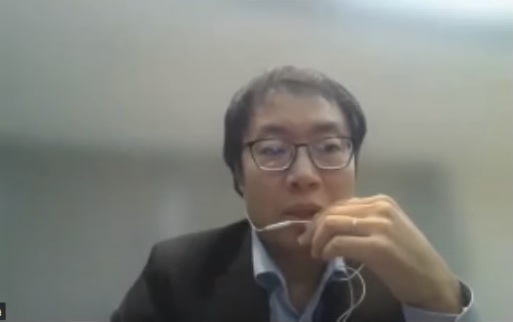
JICA Bangladesh Office Senior Representative Yamada Eiji giving a presentation on the impact assessment of the Dhaka Mass Rapid Transit system
In a panel discussion that followed, Professor Kitano Naohiro of Waseda University gave an outline of China’s urban rail transit systems and its TOD projects abroad. As of the end of 2022, there were 55 cities in China with operating rail transit systems such as subways and Light Rail Transit (LRT). While these systems can serve as measures to stimulate economies through public sector projects, the transit operators often take on large borrowings which leave them with high debt-equity ratios. The current boom in TOD was pointed out as a solution for reducing the debt burden. China has also ventured into the construction of urban rail transport in other countries, one of which is the subway in Hanoi, Vietnam. Kitano shared his view on the Hanoi Metro that “the number of passengers has not yet reached capacity, and although there are visible efforts to establish bus lines and make transport to and from stations more convenient, there are still issues in terms of cooperation with real estate development along the rail lines.”
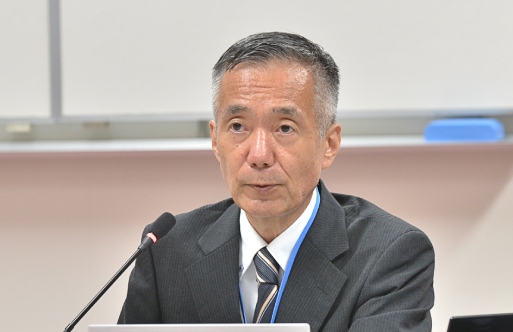
Professor Kitano Naohiro of the Waseda University giving a presentation on urban rail transit networks in China
Participants also actively posed questions, leading to lively discussions on a broad range of topics. These included the possibility of competition with other donors and future challenges in infrastructure investments in developing countries, JICA’s support for TOD projects in Southeast Asia and Africa, ways to utilize evidence uncovered in impact evaluations, differences between the support from China and Japan, and negative impacts from the development of urban transportation.

The panel discussion covered a broad range of topics
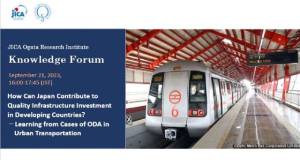

事業事前評価表(地球規模課題対応国際科学技術協力(SATREPS)).国際協力機構 地球環境部 . 防災第一チーム. 1.案件名.国 名: フィリピン共和国.

事業事前評価表(地球規模課題対応国際科学技術協力(SATREPS)).国際協力機構 地球環境部 . 防災第一チーム. 1.案件名.国 名: フィリピン共和国.

事業事前評価表(地球規模課題対応国際科学技術協力(SATREPS)).国際協力機構 地球環境部 . 防災第一チーム. 1.案件名.国 名: フィリピン共和国.

事業事前評価表(地球規模課題対応国際科学技術協力(SATREPS)).国際協力機構 地球環境部 . 防災第一チーム. 1.案件名.国 名: フィリピン共和国.

事業事前評価表(地球規模課題対応国際科学技術協力(SATREPS)).国際協力機構 地球環境部 . 防災第一チーム. 1.案件名.国 名: フィリピン共和国.
scroll